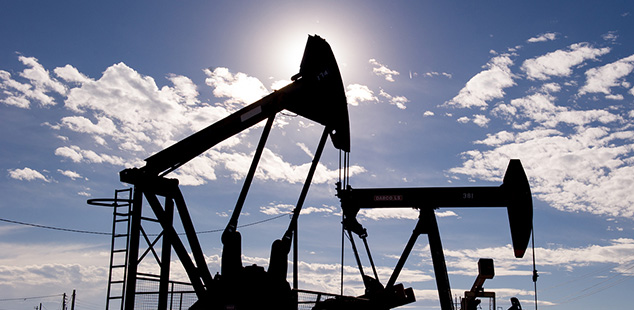
Today’s oil prices provide consumers with a nice gift at the gasoline pump as the price-per-gallon continues to decline. But for the energy industry, the drop in demand for oil coupled with burgeoning supply continues to wreak increasing havoc on a global marketplace. What does this mean for gold prices? As a safety net when things go wrong in the market economy, gold protects investors from volatility.
Oil Has Been This Low Before…
Many who follow the market are concerned that the ongoing crash in oil prices are only the tip of the iceberg 1 concerning more catastrophic financial events. Analysts are looking for future signals based on the last time the market saw oil as $30 per barrel.
The WTI crude oil spot price for oil fell to $30.28 on December 23, 2008. The Great Recession crippled economies for years; many segments of the world are only now recovering from the overall free-fall that followed. While falling oil prices were only partially to blame for the financial market crash, they accelerated the impact and longer-term consequences of the general economic decline.
Oil Indicates Broader Economic Trends
While it is fine to celebrate the visible benefit of lower pump prices for gasoline, oil prices are often the “canary-in-the-mine” when it comes to world economic conditions. In the simplest interpretation of this fundamental market metric, global markets are driven by energy prices. Cheap energy prices should generate more production and more consumption.
However, when lower global energy prices are the result of significantly lowered demand, it indicates problems that are both deep and wide. While over-production is a factor, that will not explain the type of precipitous and ongoing price declines being seen today. Even the 2008–2009 declines were not viewed as threatening as those experienced today.
Where Does Oil Stand Currently?
One report by Goldman Sachs in 2015 indicated that approximately $2 trillion in future investments were put at risk globally when oil was priced at $70 per barrel. With that price now bouncing as low as $28—and possibly lower—the long-term effects are beyond estimation.
For example, JP Morgan recently published an alert concerning the nearly $200 billion in oil and gas-related debt held by banks, and others interpreted the actual meaning of the alert as, “Keep calm and sell everything.” While most financial analysts are not so extreme in their assessment, there is a common understanding that the markets have not yet seen the worst of what is on the horizon financially. In fact, some of the gloomiest of forecasts see even more declines and a possible $10 per barrel bottom.
In Search of Stability
Today’s investors are forced to look at extremes to evaluate their current and near-term positions. Time and again, investing in gold has proven to provide protection for purchasing power and as a protection against the unknowns in major market reversals, such as those that occurred in 2008 and potentially those on the horizon. Beyond the proven economic factors, gold and precious metals also provide investors with a peace of mind that is found in few, if any, other assets during such a time of economic crisis.
Historically, gold and oil prices follow a similar trajectory as indicators of the health of a world economy; however, the two commodities are currently diverging. Oil is kept at a dangerously low price, while gold has experienced a tremendous lift so far in 2016. That’s because the stronger factors at play is that falling oil indicate a potential market crash, therefore gold’s safe haven value comes into the light. If there is a disaster in the world economy up ahead, signaled by dangerously low oil prices, having precious metals as a store of value is a strategy often used by investors of all varieties.
Additional Sources

